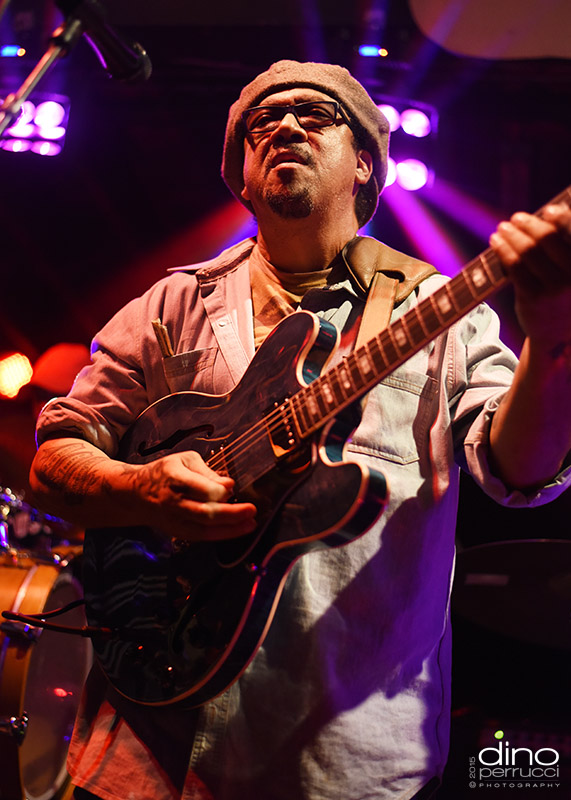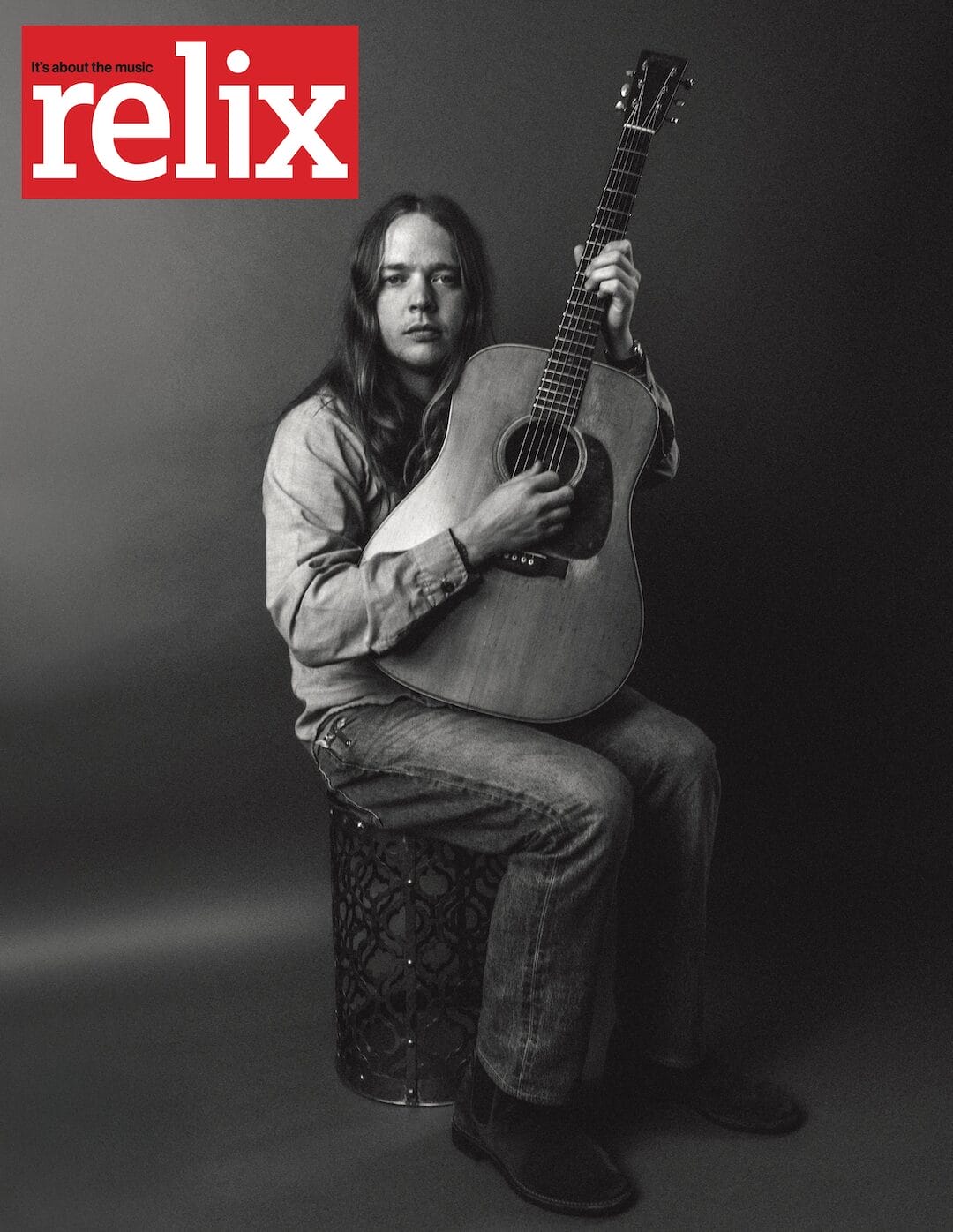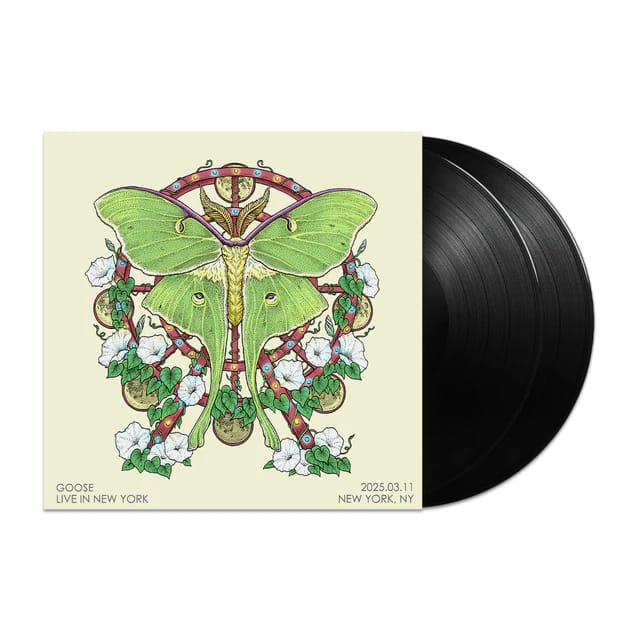Leo Nocentelli on The Meters, McCartney and 50 Years of Funk

With a tribute to Art Neville on the horizon, and retirement looming, The Meters guitarist looks back on 50-plus years of genre-defining funk
Leo Nocentelli has not only been a fixture at The New Orleans Jazz & Heritage Festival since it launched 50 years ago, he was actually in the room the moment it was conceived. The guitarist for the still-new band The Meters was hanging out with the quartet’s drummer, Zigaboo Modeliste, and their friend Quint Davis when the latter, who was still a college student at the time, hit them with an idea.
“We were at Quint’s house in the Bywater district in New Orleans,” recalls Nocentelli, now 73. “We were sitting down and Quint said, ‘What do y’all think about a festival?’ I said, ‘What kind of festival?’ He said, ‘Like a heritage festival that features local musicians, and some outside artists.’ I said, ‘Man, that’s a great idea!’ And lo and behold, he built it up—along with [Newport Jazz Festival founder] George Wein. They got together and created the New Orleans Jazz & Heritage Festival. The first one was one stage in an area called Congo Square. The lineup included Mahalia Jackson, Duke Ellington and The Meters.”
Not many artists who played that initial festival— now one of the world’s largest and most important annual cultural events—are still at it. But Nocentelli most definitely still is and he will even perform at this year’s event, reuniting with the two other surviving members of the classic Meters, Modeliste and bassist George Porter Jr., as part of a tribute to the band’s founder and keyboardist, Art Neville, who died last year. “We ain’t played together, all three of us, in a long time,” says Nocentelli. “It should be a fun thing. I’m looking forward to it.
“There’s a photo of me and Art,” he continues. “He’s bending over the organ, and we’re bumping fists. It’s a beautiful photo, man. Art Neville meant so much to me as a person, and the reason why is because of the respect that he had for me as a player. I have a tattoo burnt into my arm that says, ‘Respect means everything.”’
Is it possible that this oneoff could evolve into a fullscale, partial Meters reunion tour if the gig goes well? Nocentelli isn’t ruling anything out. “I would welcome that wholeheartedly,” he says. “It’s open out there for The Meters, or what’s left of The Meters.”
Although the impending gig has given Nocentelli reason to look back, he’s not generally a nostalgic person. He prefers to keep his focus on the future, and right now that means the new album he recently wrapped up—a collection of collaborations with Peter Gabriel, Trombone Shorty, Kirk Whalum, Stanley Clarke, Harry Connick Jr. and Cyril Neville, among others. Nocentelli also plans to compile some recordings he made several years ago with two now deceased colleagues, George Duke and Allen Toussaint, into a second release.
“These are all my songs, so it’s a pretty big thing,” Nocentelli says. “All the tracks had to say something. They were so cooperative, like a community thing.”
Leo Nocentelli—The C in his name is pronounced “ch”—is a NOLA native, born there on June 15, 1946. The future guitarist was just 8 when his father recognized his interest in music. “He didn’t have a lot of money, so he bought me a $2.98 ukulele at the Woolworth’s store,” Nocentelli says. “It had four plastic strings. But when he gave it to me, I was excited, like it was a Gibson ES-335 guitar. I just started plucking melodies on that little toy. I didn’t know what I was doing, but I guess he saw that and said, ‘This dude, my son, might have some talent.’”
By his teens, Nocentelli had graduated to the guitar. “While other people on the block were drinking and hanging out with chicks and whatever, I was in my room stretching my fingers,” he says. “It took a lot of dedication and sacrifice for me to develop into what I am.”
Success took its time but, eventually, Nocentelli joined a local band, The Hawketts, led by Art Neville, who’d gained some local notoriety with a record called “Mardi Gras Mambo.” Nocentelli also became an in-demand studio musician, working with Toussaint at the local Sansu Studio and contributing guitar to hit singles by such New Orleans stars as Lee Dorsey (“Ya Ya,” “Working in a Coal Mine”) and Ernie K-Doe (“Mother-in-Law”). In addition, he also went on the road with Otis Redding and did some studio session work for Motown Records. “I call myself a Forrest Gump of musicians,” Nocentelli says. “I was just at certain historical places at historical times.
The Meters came about in 1965 when a couple members of the band, which already included Nocentelli and Art Neville, dropped out or passed away. Their replacements were Modeliste and Porter. At first the new quartet called itself Art Neville and the Neville Sounds but, says Leo, “That was the four Meters right there.” The Meters were playing a club on New Orleans’ Bourbon Street when Nocentelli introduced the others to “a melody I’d been having in my head for years.” That melody took on a title, “Cissy Strut,” which they released as a single on the Josie label, but not before testing the waters first with the similarly titled “Sophisticated Cissy.” Both songs made the Billboard R&B Top 10 and the pop Top 40, but it was “Cissy Strut” that became The Meters’ signature tune.
At first, says Nocentelli, The Meters were considered an R&B combo, but they quickly developed their own rhythmic approach, evolving into one of the country’s pioneering funk units. What made them different from contemporaries like James Brown and George Clinton was that “the bass and the guitar were playing the same thing; they were in sync, playing the same melody. That was unheard of with R&B. Also, it was instrumental music and that was unique.”
In addition to their singles, The Meters’ albums, beginning with 1969’s self-titled debut and Look-Ka Py Py, began finding a devoted audience that appreciated the quartet’s superb musicianship, songwriting abilities and arrangement skills. They eventually added vocals to the mix and, although their albums didn’t burn up the sales charts, the band became a coveted live act, touring as the openers for The Rolling Stones and impressing the likes of Paul McCartney, who hired them to play a party aboard the Queen Mary ocean liner.
“That was unbelievable, man,” Nocentelli says with a grin. “I played on Paul’s Venus and Mars album, and he fell in love with The Meters. At this party, they had people like Fred Astaire and Ursula Andress dancing to ‘Cissy Strut.’ I saw Michael Jackson standing by the stage looking at us.”
Even while The Meters were in full swing, Nocentelli played on sessions for artists like Dr. John and Robert Palmer. Then, in 1977, The Meters began to unravel when Art Neville and his brother Cyril, who had joined on percussion and vocals, decided to leave the band and start a new group with their siblings: The Neville Brothers. “That was [Art’s] prerogative,” says Nocentelli. “I’m not kicking him for that. I loved Art, and that was his decision, and I honored that. However, when you lose somebody like that, the record company loses faith in you because it’s not the whole group—especially when it’s a guy like Art Neville that started the group.”
The remaining three attempted to keep the band together for a while, in various configurations, but finally drifted apart from one another—among other pursuits, Nocentelli toured with Robert Palmer and Jimmy Buffett. “It wasn’t an anger thing,” he says of The Meters’ dissolution. “We just had to do what we had to do to survive, and if it meant playing with other people, that’s what we did.”
In the ‘80s, he moved to Los Angeles, staying there for more than three decades while he picked up work where he could. A few years ago, the LA weather drew him back home. That’s right, the LA weather: “It’s funny, man,” he says, laughing. “I came up with seasons, with gloomy days, and I love that. But in LA every day, every goddamn day, it’s sunny! The redundancy of great weather ran me away.”
There have been quasi-reformations and further breakups of the various Meters lineups since the ‘80s, including a high-profile 2000 reunion at San Francisco’s Warfield. In recent years, though, the founding members have largely splintered into competing groups, occasionally regrouping as The Original Meters. Nocentelli takes it all in stride.
“I want to make one thing perfectly clear,” he says about his relationship with The Meters’ music. “Whether I wrote the songs or not, those songs could not have happened—and could not have sounded like they did—unless it was with myself, George, Zig and Art. It didn’t make a difference if I wrote them. I have to give credit to those three guys for making those songs come alive, and that’s the truth.”
Now that he’s back in New Orleans though, Nocentelli is looking at trying something he’s never really done before: chilling. “I hardly do anything, maybe some special things, but I don’t perform here a lot,” he says. “I could perform here 960 days a week if I wanted to, but I just can’t come to the mentality.”
When asked what he would like to do with his time after his upcoming projects wrap, Nocentelli doesn’t pretend to have high aspirations. “I’d like to retire,” he says bluntly. “A lot of people say, ‘You’re Leo Nocentelli. Don’t you know who you are?’ But I’m like anybody. I get tired. Once the passion leaves you, it affects what you do. I would love to retire and then help some other people, other musicians—maybe produce them or show them something. I do clinics. I do master classes. I love that. I love teaching. I love giving, man. Maya Angelou said, ‘When you get, give. And when you learn, teach.’ I thought that was so perfect, so beautiful.”




















